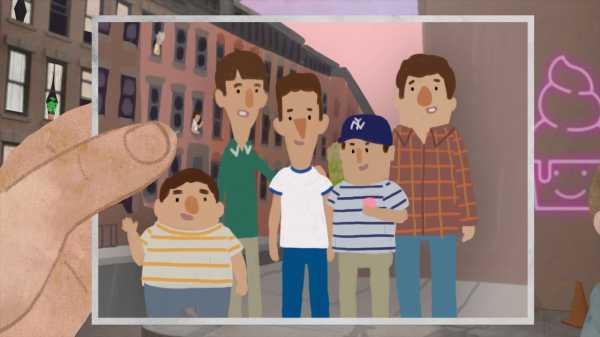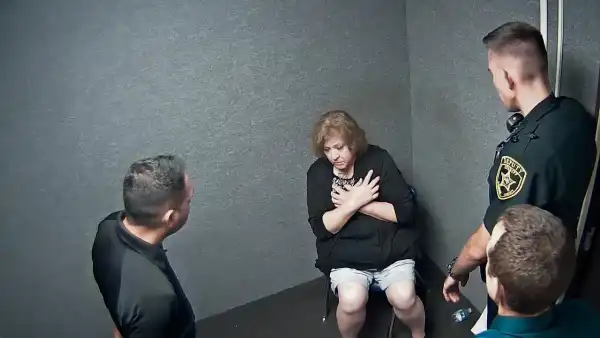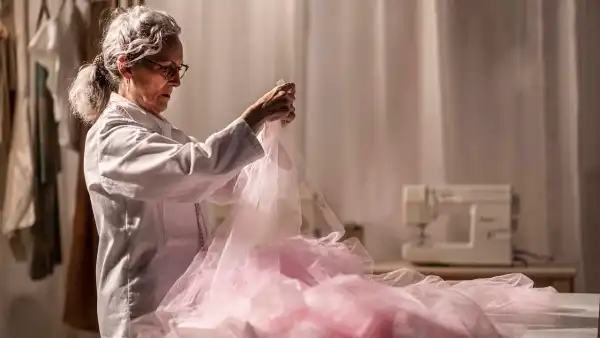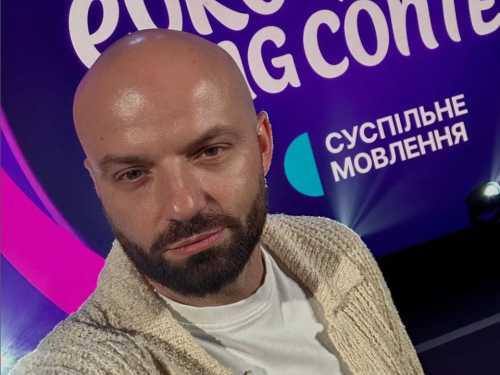
“The Originals” re-creates a world of pranks and mischief, of neighborhood sports that transform stationary objects in the street into bases and home plate.
Once upon a time in Brooklyn, kids played stickball in the street until dinnertime, mothers and grandmothers took chairs outside to chat, and all the families knew one another. The neighborhood seemed like the whole world. This is how Matteo Ruggiero—or Matty, as he’s known to friends—one of the real-life subjects depicted in the animated short “The Originals,” remembers the block where he grew up, on Union Street in Carroll Gardens. “It was like a stadium,” he says. “Everything was there.” Along with a group of friends who grew up together, Ruggiero lists off the games they used to play: stoopball, slapball, Old Mother Witch, and more. They laugh off the violence of some of the games.“Spaldeen was better because you could get more, uh, sting out of it,” remembers Carmine Ruggiero, of the Spalding Hi-Bounce Ball. “Most of our games came with pain,” adds Sal Alioto.
In the film, directed by Cristina Costantini and Alfie Koetter, the friends appear as paper-doll-like versions of themselves, animated using digitally produced puppets that move through a 3-D model of the old neighborhood. Koetter, an architect, created the model, and the pair played with light and color to distinguish present-day scenes from those from the past. The directors, who are married, met Matty Ruggiero when they lived in Carroll Gardens; Ruggiero was their landlord and downstairs neighbor.
The New Yorker Documentary
View the latest or submit your own film.

When they moved to Union Street, Costantini and Koetter worried about how they’d be received as newcomers, but, Costantini told me, “We found an incredible warmth.” The couple were soon invited to dinners, where Ruggiero would regale them with stories of his childhood in nineteen-seventies Carroll Gardens and the neighborhood as he loved to remember it: a world of pranks and mischief, sports that transformed stationary objects in the street into bases and home plate, as adults watched from windows, stoops, and folding chairs. After they moved to Los Angeles, Costantini and Koetter missed the Italian American raconteur and wanted to share his stories, and those of the rest of “the gang,” in some form. “We had heard Matty tell these stories a lot while we were living with him, and we knew that he was a very good storyteller. And we knew that, before too much time passed, we wanted to reach out to him and get him on tape,” Koetter said.
The result is a vivid film that plays out on an intricately detailed model of a single block of brownstone Brooklyn. The childhood friends, now in late middle age, remember not just the games they played but also the prevalence of organized crime that shaped the neighborhood, and, to some degree, their own lives. And they talk, of course, about how the neighborhood has changed, laughing about the influx of “yuppies” who don’t return hellos on the street. But Matty dreams that the good parts of the old days—that “tight-knit” feeling—could return to the block. “I would hope that it would turn back the way it was, you know, all these kids would come out,” he says. “Hopefully all these kids’ll watch this short story yous guys are producing here, directing, and what have you—they come back out in the street.”
Sourse: newyorker.com






